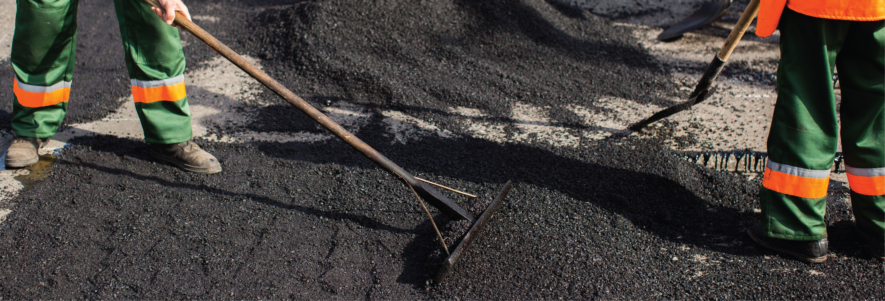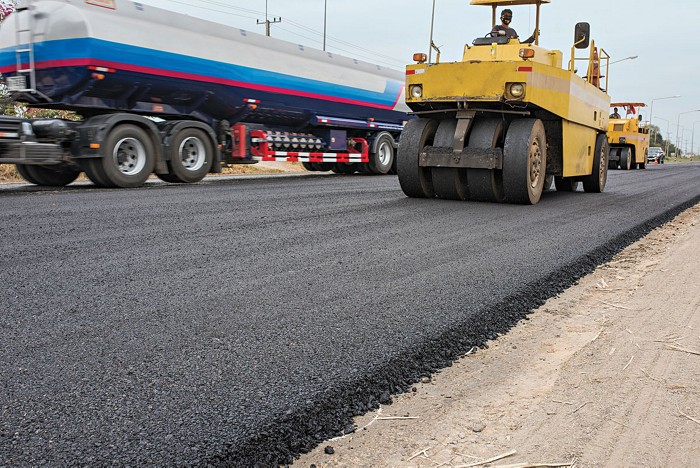How A1 Professional Asphalt & Sealing Llc can Save You Time, Stress, and Money.
How A1 Professional Asphalt & Sealing Llc can Save You Time, Stress, and Money.
Blog Article
A1 Professional Asphalt & Sealing Llc Fundamentals Explained
Table of ContentsGetting The A1 Professional Asphalt & Sealing Llc To WorkExcitement About A1 Professional Asphalt & Sealing LlcAn Unbiased View of A1 Professional Asphalt & Sealing LlcThe 2-Minute Rule for A1 Professional Asphalt & Sealing LlcThe Only Guide for A1 Professional Asphalt & Sealing Llc

The oil in an automobile engine is not simply oil. It has a variety of additives to enhance the car's performance. These consist of polymers, viscosity modifiers, warmth stabilizers, extra lubes, and wear ingredients. The REOB consists of all the additives that remained in the waste oil along with the wear steels from the engine (primarily iron and copper).
Nevertheless, by making several blends using different REOB examples and various asphalt binders, the variations mainly can be balanced out. Several States provided examples of well-known REOB structure to TFHRC researchers, that analyzed the samples to contrast the percentage of included (known) REOB to the discovered (examined) quantity. The analyses showed an equivalent percent of added and discovered REOB.
All about A1 Professional Asphalt & Sealing Llc
None of those States realized that the asphalt they were getting consisted of REOB. One State urged its samples had no REOB - http://go.bubbl.us/e16bb8/19e3?/New-Mind-Map.
Of the 1,532 samples checked, 12 percent contained REOB, and some had appreciably high levels of it at 1020 percent. The highest degree was 34 percent in a sample from Texas, which TxDOT had used in a patching substance. This screening also revealed the existence of phosphoric acid in 11 percent of the examples, and 2 percent had ground tire rubber.
2 years earlier at TRB's yearly meeting, the Federal scientists held an REOB workshop and presented the findings of their research laboratory examinations to a standing room-only group. Some firms do not specifically outlaw REOB, they do impose physical tests that avert its useeffectively a restriction. Others do not prohibit it by spec, however have agreements with asphalt providers to prevent the usage of REOB
Excitement About A1 Professional Asphalt & Sealing Llc
Ohio and Texas limit levels to less than 5 percent of the asphalt. To develop a trustworthy test technique that all States can use, the TFHRC researchers established up a round-robin examination strategy.
In total, the researchers prepared and shipped 720 blends. The individuals are checking the samples separately utilizing the guidelines provided by the TFHRC researchers. The round-robin screening is almost finished, and TFHRC remains in the procedure of gathering the results. The output will certainly be a recommended AASHTO examination technique that any State can adopt and make use of (asphalt repairs).
The sidewalk with REOB, which lies 0.6 mile (1 kilometer) from the sidewalk without REOB, has similar subgrade, traffic thickness, and climate. The segment of Highway655 with 5 to 10 percent REOB revealed significant fracturing. In this example, the visibility of REOB was the identified reason of splitting at a low temperatures.
"In our experience in copyright, also tiny quantities of 23 percent can be a trouble." In a similar way, a section of examination pavement in Minnesota (MN1-4) discovered to contain REOB likewise cracked too soon. The pavement performed well for the very first 3 to 4 years, yet after that started to break. This sidewalk is additionally subject to low temperatures.
A1 Professional Asphalt & Sealing Llc Can Be Fun For Everyone
The tests were not substantial, however they showed that at levels of 6 percent or more, the tensile toughness of the asphalt went down dramatically. At a degree of 3.5 percent REOB, the variation in the physical examination techniques was higher than the impact of REOB. As a matter of fact, it was difficult for researchers to evaluate whether REOB existed.

One binder criterion thought about is the distinction between the reduced image source temperature level essential requirements temperature for rigidity (S) in the bending light beam rheometer and the bending light beam rheometer creep incline (m-value) noted as Tcritical. 2 independent research study groups, one from AASHTO and the other from the Asphalt Institute, ended that more research is required on the use of REOB in asphalt.
Previously, all asphalt screening measured design residential or commercial properties such as stiffness. These examinations do disappoint what products had been contributed to the asphalt. One sample gotten during the TFHRC research had a very strange evaluation. The sample had the complying with examination outcomes: Superpave PG 64-28 with a heat quality of 67.3 Tcritical on the bending light beam rheometer was 6.7 levels Celsius.

More About A1 Professional Asphalt & Sealing Llc
These results demonstrate there are weak points in the standard design screening procedures that may be made use of. The manufacturer may have a financial advantage and the product passes all the standardized examinations, yet the item may not be advantageous to making certain lasting performance. To address this issue and the development of brand-new asphalt additives and extenders, TFHRC is beginning a study program to utilize portable spectroscopic tools, x-ray fluorescence spectroscopy, and Fourier change infrared spectroscopy to make it possible for evaluations to be carried out in the area as opposed to needing to take samples back to the laboratory.
Report this page